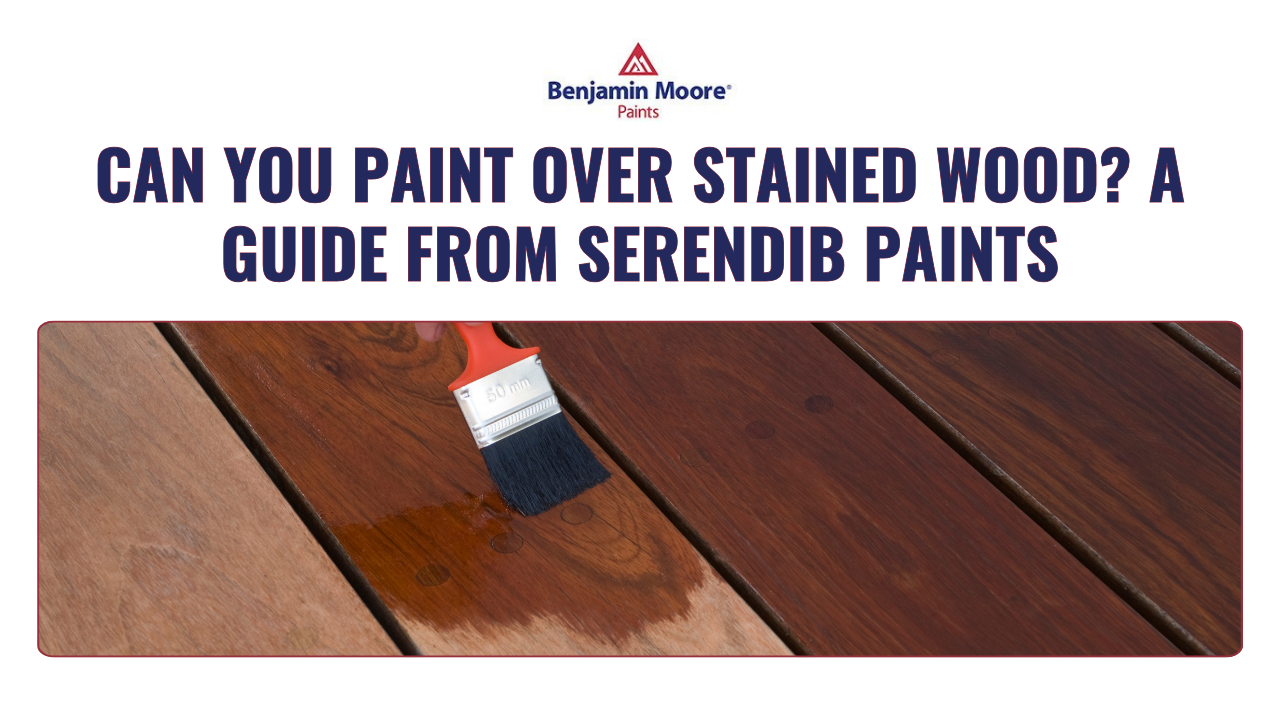
Painting over stained wood can transform your home’s aesthetic and give old furniture or woodwork a fresh, new look. At Serendib Paints, we are committed to bringing innovation and quality to your painting projects. Before you embark on painting over stained wood, there are several steps to ensure a smooth and durable finish. Here’s a comprehensive guide on how to paint over stained wood effectively.
Why Paint Over Stained Wood?
- Enhance Aesthetic Appeal: Painting over stained wood allows you to modernize the look of your furniture, trim, or cabinetry. It’s an excellent way to update your home décor without replacing the wood.
- Cover Imperfections: Painting can hide imperfections such as scratches, stains, or fading on wood surfaces, giving them a new lease on life.
- Achieve Desired Color Scheme: If the stained wood does not match your current color scheme, painting over it allows you to achieve the exact look you desire.
Step-by-Step Process to Paint Over Stained Wood
Step 1: Preparation
Why It’s Important: Proper preparation ensures that the paint adheres well and lasts longer. Skipping preparation can result in peeling or chipping paint.
How to Do It:
- Clean the Surface: Use a mild detergent and water to clean the wood surface. Remove all dust, dirt, and grease.
- Sand the Surface: Lightly sand the wood with fine-grit sandpaper (180-220 grit). Sanding creates a smooth surface and helps the paint adhere better.
- Remove Dust: Wipe the sanded surface with a tack cloth or damp rag to remove all sanding dust.
Step 2: Prime the Surface
Why It’s Important: Priming helps to seal the wood and creates a uniform surface for the paint to adhere to. It also prevents stains or tannins from bleeding through the paint.
How to Do It:
- Choose the Right Primer: Use a high-quality primer suitable for wood. An oil-based primer is often recommended for stained wood.
- Apply Evenly: Apply the primer evenly using a brush or roller. Follow the manufacturer’s instructions on drying times.
- Sand Again: After the primer is dry, lightly sand the surface again with fine-grit sandpaper and clean off the dust.
Step 3: Paint the Wood
Why It’s Important: Using the right paint and applying it correctly ensures a smooth, professional finish that lasts.
How to Do It:
- Select the Paint: Choose a high-quality latex or oil-based paint, depending on your preference and the type of wood.
- Apply First Coat: Apply the first coat of paint using a brush for detailed areas and a roller for larger surfaces. Ensure even coverage.
- Let It Dry: Allow the paint to dry completely, as per the manufacturer’s recommendations.
- Apply Additional Coats: Apply at least one additional coat of paint for a durable finish. Sand lightly between coats for the best result.
Expert Tip: For a smooth finish, consider using a paint additive to enhance flow and leveling. Visit our paint section for more options.
Step 4: Seal the Paint
Why It’s Important: Sealing protects the painted surface from scratches, chips, and moisture, especially for high-traffic areas or furniture.
How to Do It:
- Choose a Sealer: Use a clear polyurethane sealer suitable for painted surfaces.
- Apply Evenly: Apply the sealer with a clean brush, following the direction of the wood grain.
- Follow Drying Instructions: Allow the sealer to dry thoroughly according to the manufacturer’s instructions.
Why Choose Serendib Paints?
At Serendib Paints, we are dedicated to quality and customer satisfaction. Our team of experts provides faster, more effective, and comprehensive service to ensure your painting projects are successful. With a wide range of paints, stains, and lacquers, we have everything you need for any project.
